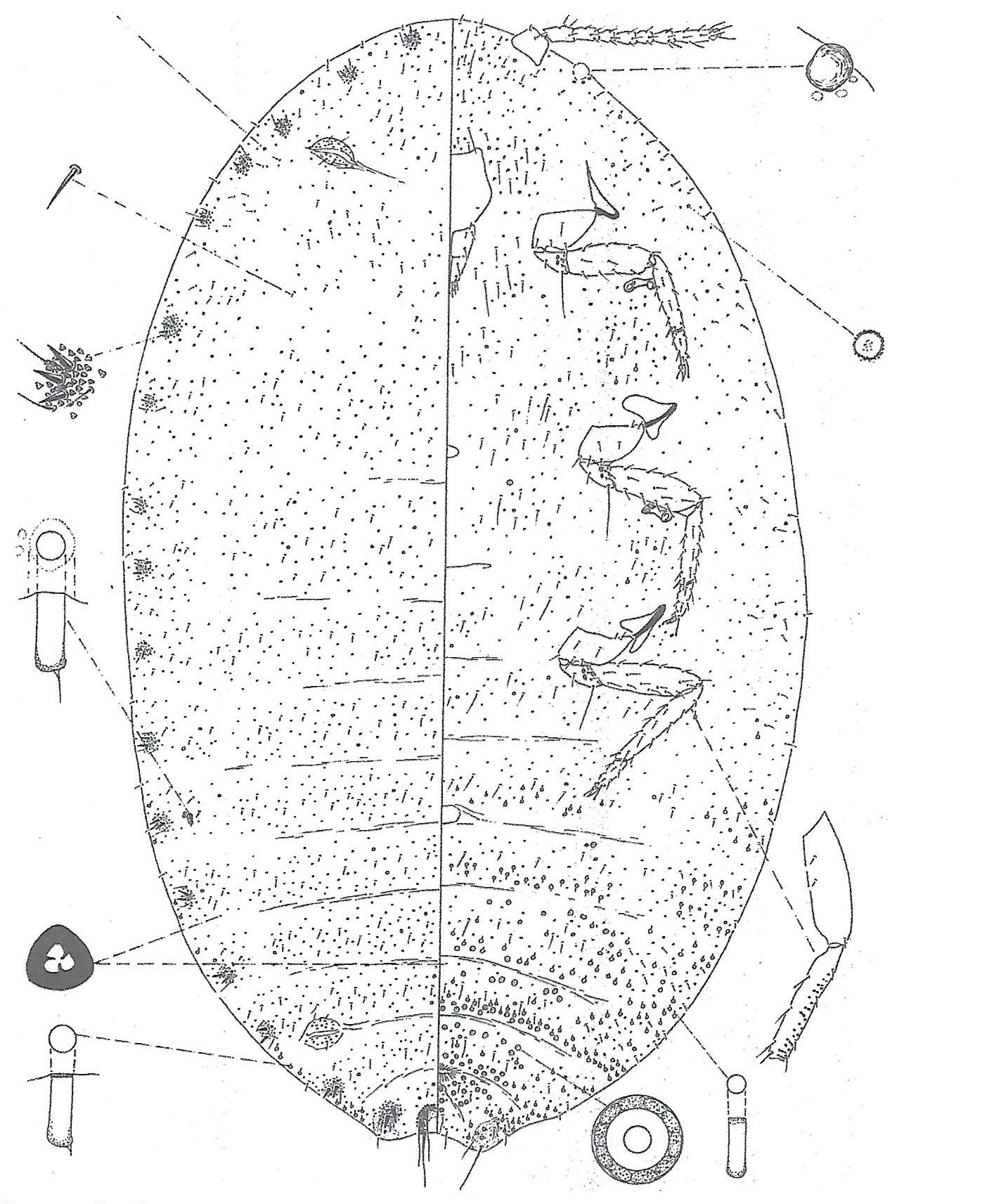Valid Names Results
Pseudococcus neomicrocirculus Gimpel & Miller, 1996 (Pseudococcidae: Pseudococcus)Nomenclatural History
- Pseudococcus neomicrocirculus Gimpel & Miller 1996: 96. Type data: VENEZUELA: La Guayia, intercpted at Brownsville, U.S.A., on Cattleya sp.. Holotype, female, Type depository: Washington: United States National Entomological Collection, U.S. National Museum of Natural History, District of Columbia, USA; accepted valid name Illustr.
Common Names
- Venezuela orchid mealybug GimpelMi1996
Ecological Associates
Hosts:
Families: 1 | Genera: 2
- Orchidaceae
- Cattleya | GimpelMi1996
- Cattleya gaskelliana | GimpelMi1996
- Cattleya lueddemanniana | GimpelMi1996 | (= Cattleya speciosissima)
- Oncidium | GimpelMi1996
Geographic Distribution
Countries: 3
- Costa Rica | GimpelMi1996
- Guatemala | GimpelMi1996
- Venezuela | GimpelMi1996
Keys
- GranarGo2018: pp.10-14 ( Adult (F) ) [Central & South American Pseudococcus]
- VonEllWa2016: pp.74-76 ( Adult (F) ) [Pseudococcus species present in the New World]
- GimpelMi1996: pp.20 ( Adult (F) ) [World]
Remarks
- Systematics: Pseudococcus neomierocirculus has been confused with P. microcirculus but can be separated by having: Multilocular pores in a transverse row on posterior margin of segment IV; 5(3-6) auxiliary setae in cerarius 12; 22(17-30) trilocular pores in cerarius 12; longest interantennal seta 42(35 -54)µ long; longest ventral seta on abdomen 25(20-35)µ long. Pseudococcus microcirculus has: Multilocular pores absent from posterior margin of segment IV; 3(1-4) auxiliary setae in cerarius 12; 16(8-24) trilocular pores in cerarius 12; longest interantennal seta 63(49-77)µ long; longest ventral seta on abdomen 39(30-47)µ long. (Gimpel & Miller, 1996)
- Structure: Circulus small, width 59(27-79)µ, located on segment III; translucent pores restricted to hind tibiae; multilocular pores on posterior margin of segment IV; hind tibia / hind femur length 1.0(0.9-1.1); hind femur 208(180-237)µ long. (Gimpel & Miller, 1996)
- General Remarks: Good description and illustration of the adult female given by Gimpel & Miller (1996).
Illustrations
Citations
- GimpelMi1996: description, distribution, host, illustration, taxonomy, 96-100
- GranarGo2018: diagnosis, distribution, illustration, key, taxonomy, 10-14, 36
- VonEllWa2016: key, 76




